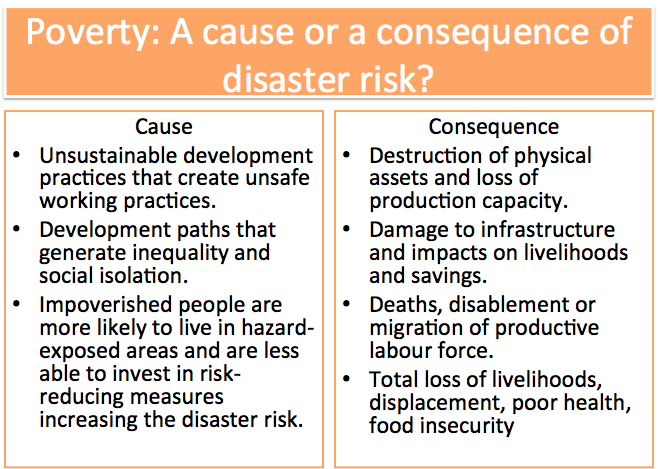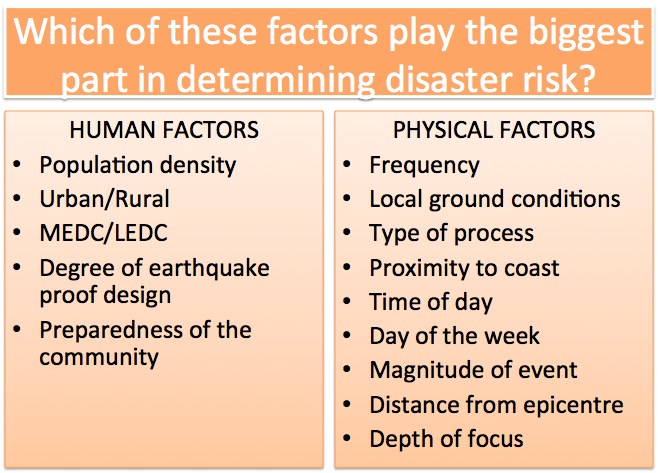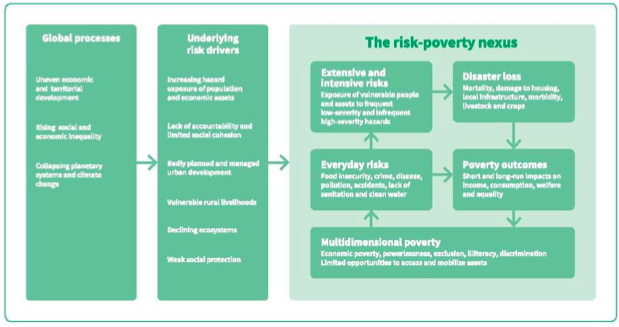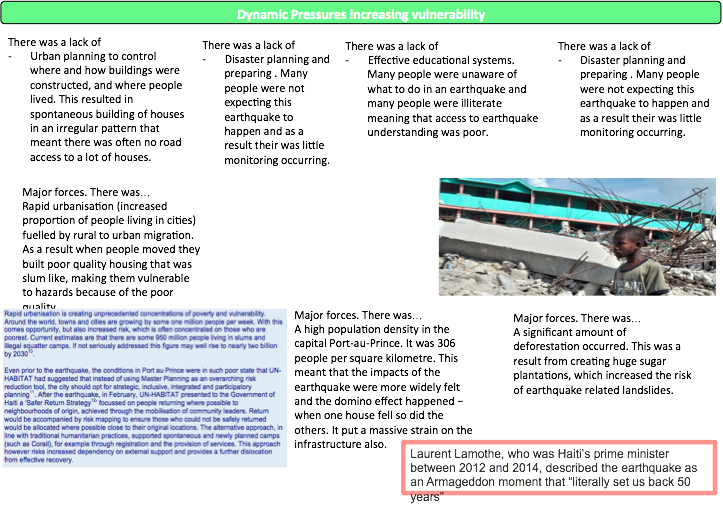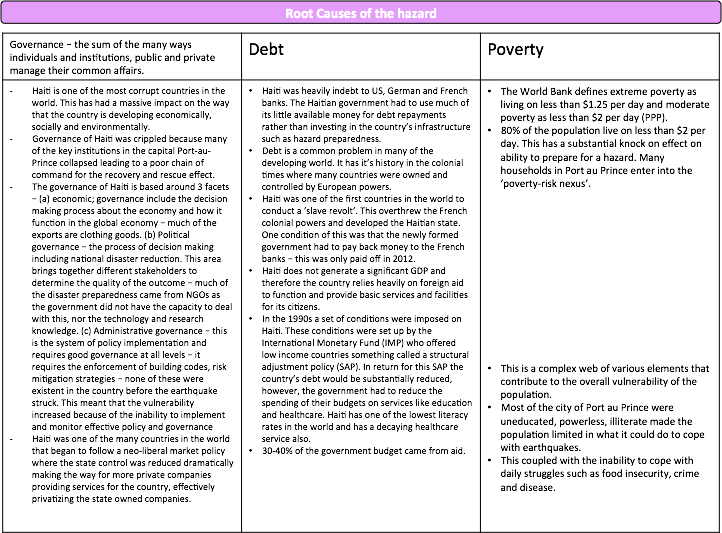Development and Disaster Risk
Human and Physical Factors
PARModel
What were the ‘root causes’ of the PAR model and how are they relevant?
Lack of access to resources:
People and communities in developing and recently emerging countries have access to insecure resources and livelihoods.
Ideologies:
Low priority for government interventions for hazard mitigation.
People lose confidence in their own local knowledge and rely more on government help which may not work as well for them and their families. Some people have little ‘voice’ so they are less likely to benefit from services or preventative measures – marginalisation?
Disaster Risk Inequality
Inequality
The richest 2% of the world’s adult population now own over 50% of global wealth.
The bottom 50% own less than 1% of global wealth.
Socio-economic inequality is likely to continue to increase and with it, so will disaster risk. This will especially be the case for for countries, communities and households that have only limited opportunities to manage their risks and strengthen their resilience.
Disaster Risk Inequality
Impoverished people are more likely to live in hazard-exposed areas and are less able to invest in risk-reducing measures. The lack of access to insurance and social protection means that people in poverty are often forced to use their already limited assets to reduce disaster losses, which drives them into further poverty.
While absolute losses tend to be higher amongst wealthier groups, the relative impact of disasters on low-income households is far greater.
Take the example of Hurricane Mitch (1998) which destroyed over a quarter of the household implements, tools or animals of the wealthiest 20% of households but only a tenth in the case of the poorest 20% of households.
However, because the poorest households had so little to start with, the impact of their losses was more severe. The poorest group lost nearly 18% of their pre-Mitch asset value and 40% of their total crop value, compared to just 3% and 25% respectively for the wealthiest group (UNISDR, 2009b).
- Low levels of development are often at the root of natural disasters.
- The relationship between disaster risk and development is complex.
- Disasters cause impoverishment, which can lead to a cycle of losses, poverty traps and a slowing of efforts to reduce poverty.
- While absolute losses tend to be higher amongst wealthier groups, the relative impact of disasters on low-income households is far greater.
- Not every disaster leads to such negative long-term impacts and recovery can be relatively quick in some countries
Case Studies
Haiti
